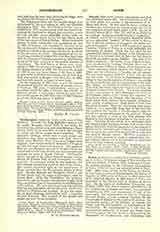

Dunfermline, Abbey of, in the southwest of Fife, Scotland. Founded by King Malcolm Canmore and his queen, Margaret, about 1070, it was richly endowed by him and his sons, and remodeled as a Benedictine abbey by his successor, David I, who brought an abbot and twelve monks from Canterbury. The monastic buildings, which were of such extent and splendor that three sovereigns and their retinues might (says Matthew Paris) have been lodged there together, were burned down by Edward I of England in 1304, but were afterwards restored. The tombs of Malcolm and Margaret are still to be seen within the ruined walls of the Lady chapel, and were repaired and enclosed by order of Queen Victoria. Dunfermline Abbey was one of the richest Scottish houses, owning almost all Western Fife, as well as property in other counties. It possessed, within its own domains, civil and criminal jurisdiction equal to that of the Crown. The church succeeded Iona as the burial-place of kings, and was thus the Westminster Abbey of Scotland. Besides Malcolm and Margaret, David I and Robert Bruce, with his queen and daughter, were interred there. After the Dissolution, the property passed through the hands of the Pitcairn family, Lord Gray, and Seton Earl of Dunfermline, to the Marquises of Tweeddale. The splendid church was destroyed in 1560 by the Reformers, all but the nave, which they refitted for Presbyterian worship. It is a fine example of Anglo-Norman architecture, with a beautiful western doorway. The remains of the church and palace are now Crown property.
D. O. HUNTER-BLAIR

